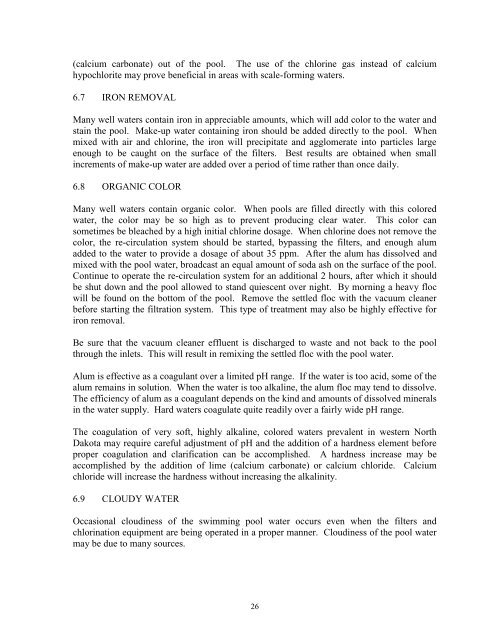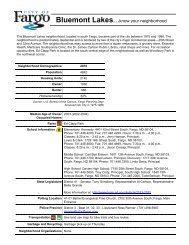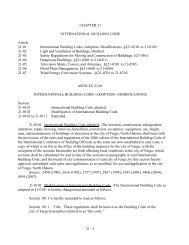You also want an ePaper? Increase the reach of your titles
YUMPU automatically turns print PDFs into web optimized ePapers that Google loves.
(calcium carbonate) out <strong>of</strong> the pool. The use <strong>of</strong> the chlorine gas instead <strong>of</strong> calciumhypochlorite may prove beneficial in areas with scale-forming waters.6.7 IRON REMOVALMany well waters contain iron in appreciable amounts, which will add color to the water andstain the pool. Make-up water containing iron should be added directly to the pool. Whenmixed with air and chlorine, the iron will precipitate and agglomerate into particles largeenough to be caught on the surface <strong>of</strong> the filters. Best results are obtained when smallincrements <strong>of</strong> make-up water are added over a period <strong>of</strong> time rather than once daily.6.8 ORGANIC COLORMany well waters contain organic color. When pools are filled directly with this coloredwater, the color may be so high as to prevent producing clear water. This color cansometimes be bleached by a high initial chlorine dosage. When chlorine does not remove thecolor, the re-circulation system should be started, bypassing the filters, and enough alumadded to the water to provide a dosage <strong>of</strong> about 35 ppm. After the alum has dissolved andmixed with the pool water, broadcast an equal amount <strong>of</strong> soda ash on the surface <strong>of</strong> the pool.Continue to operate the re-circulation system for an additional 2 hours, after which it shouldbe shut down and the pool allowed to stand quiescent over night. By morning a heavy flocwill be found on the bottom <strong>of</strong> the pool. Remove the settled floc with the vacuum cleanerbefore starting the filtration system. This type <strong>of</strong> treatment may also be highly effective foriron removal.Be sure that the vacuum cleaner effluent is discharged to waste and not back to the poolthrough the inlets. This will result in remixing the settled floc with the pool water.Alum is effective as a coagulant over a limited pH range. If the water is too acid, some <strong>of</strong> thealum remains in solution. When the water is too alkaline, the alum floc may tend to dissolve.The efficiency <strong>of</strong> alum as a coagulant depends on the kind and amounts <strong>of</strong> dissolved mineralsin the water supply. Hard waters coagulate quite readily over a fairly wide pH range.The coagulation <strong>of</strong> very s<strong>of</strong>t, highly alkaline, colored waters prevalent in western NorthDakota may require careful adjustment <strong>of</strong> pH and the addition <strong>of</strong> a hardness element beforeproper coagulation and clarification can be accomplished. A hardness increase may beaccomplished by the addition <strong>of</strong> lime (calcium carbonate) or calcium chloride. Calciumchloride will increase the hardness without increasing the alkalinity.6.9 CLOUDY WATEROccasional cloudiness <strong>of</strong> the swimming pool water occurs even when the filters andchlorination equipment are being operated in a proper manner. Cloudiness <strong>of</strong> the pool watermay be due to many sources.26












